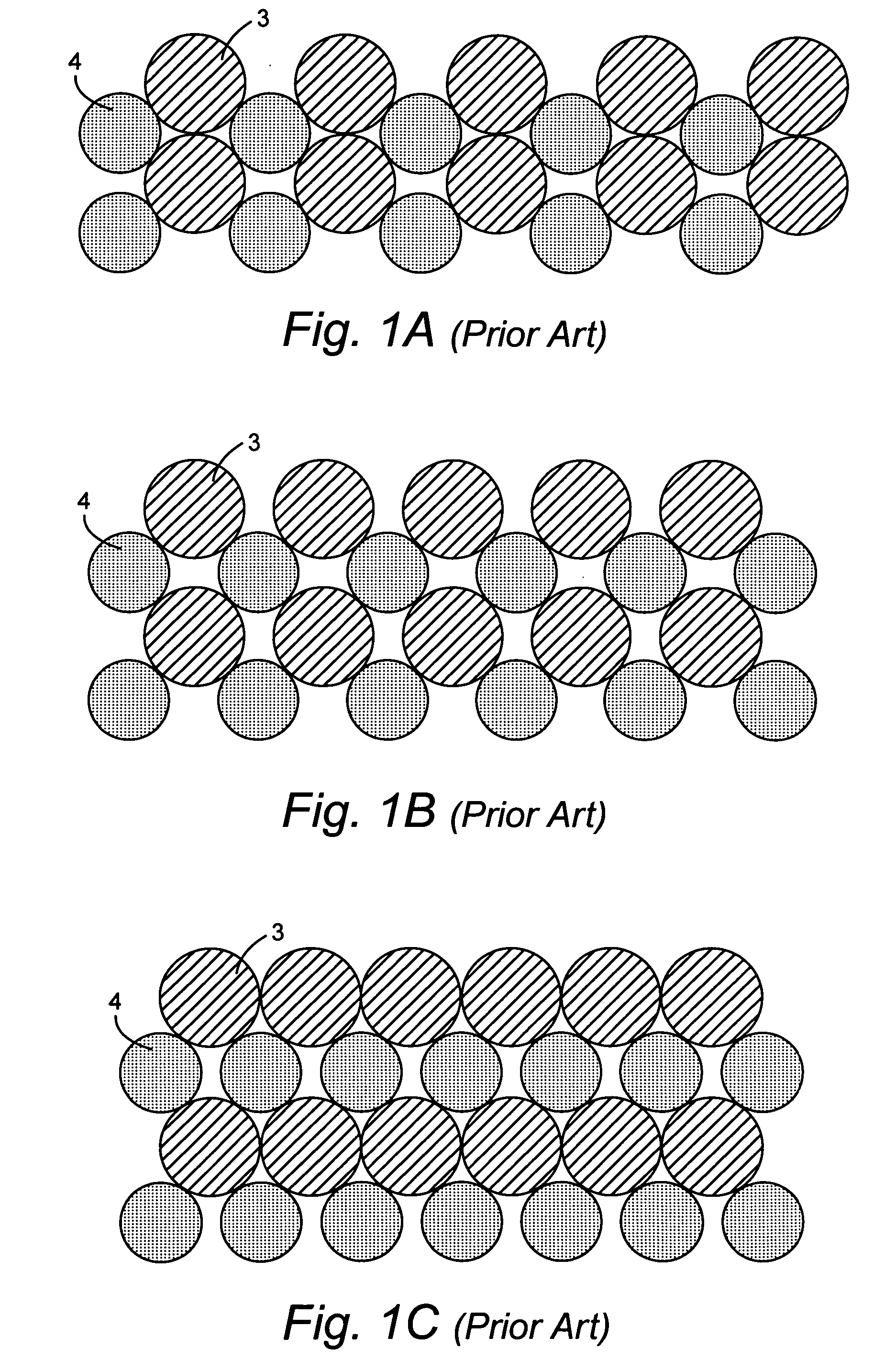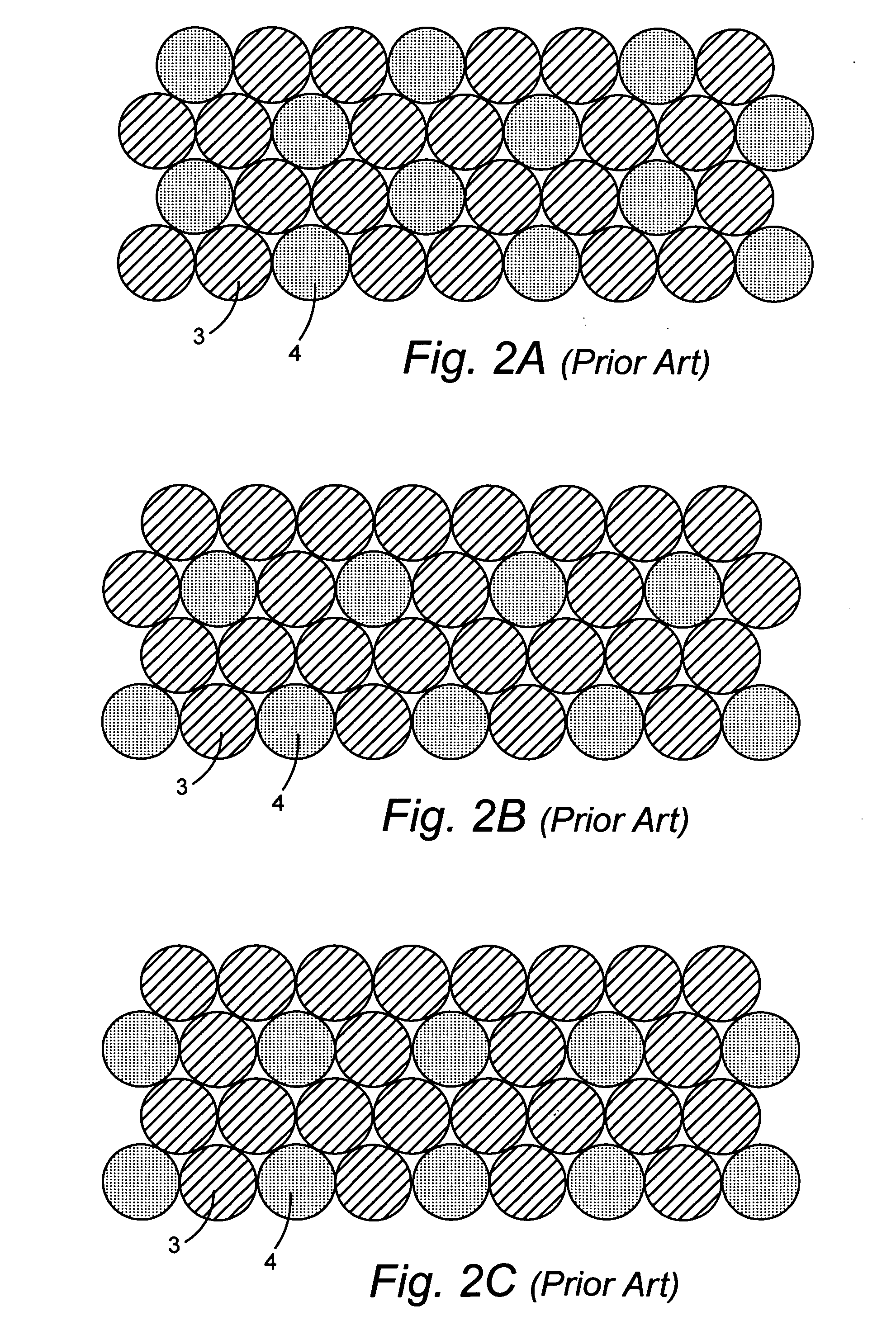Wire/fiber ring and method for manufacturing the same
- Summary
- Abstract
- Description
- Claims
- Application Information
AI Technical Summary
Benefits of technology
Problems solved by technology
Method used
Image
Examples
Embodiment Construction
[0046] The preferred embodiments of the present invention will now be described with reference to FIGS. 4A-E and FIG. 5. In accordance with the present invention, an improved method has been identified that achieves a wire / fiber ring having a low void content and a stable array concurrently with flexibility in fiber fraction of between about 0% to 70% and preferably between about 30% and 45%.
[0047] In accordance with the present invention, stacking is controlled such that two layers are built-up using four tapes in four operations as shown in FIGS. 4A-4E, and FIG. 5. By controlling the stacking in this way stability problems that plague the prior art are overcome. As shown, dissimilar-sized elements can be stacked reliably by applying the elements to a winding core, or mandrel 50, using four tapes 56a-d applied in four sequential clock positions 58a-d. At each clock position a tape of all equal sized wires or all equal sized fibers are applied to the winding core. The selection of ...
PUM
| Property | Measurement | Unit |
|---|---|---|
| Temperature | aaaaa | aaaaa |
| Pressure | aaaaa | aaaaa |
| Diameter | aaaaa | aaaaa |
Abstract
Description
Claims
Application Information
 Login to view more
Login to view more - R&D Engineer
- R&D Manager
- IP Professional
- Industry Leading Data Capabilities
- Powerful AI technology
- Patent DNA Extraction
Browse by: Latest US Patents, China's latest patents, Technical Efficacy Thesaurus, Application Domain, Technology Topic.
© 2024 PatSnap. All rights reserved.Legal|Privacy policy|Modern Slavery Act Transparency Statement|Sitemap



